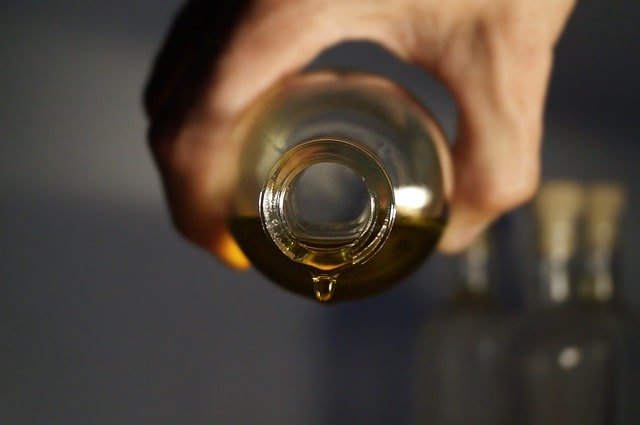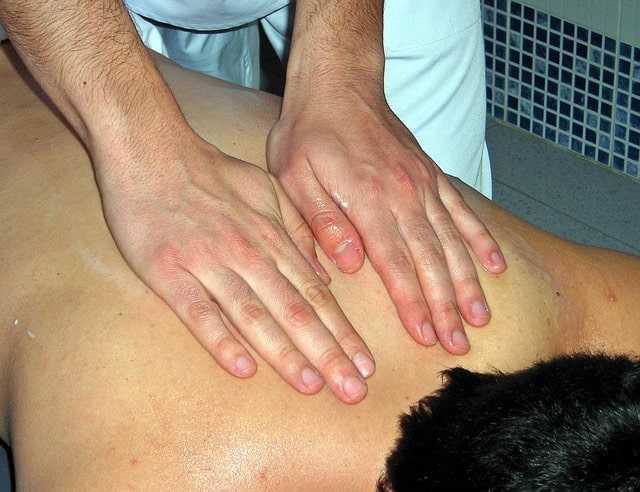In Ayurveda, Mahanarayan Taila (Mahanarayana Thailam) has been used for centuries to treat various ailments, such as arthritis, anxiety, headaches, and many others.
In this blog post, we will dig out the topic to get the essential information about Mahanarayan Taila (Mahanarayan Oil) right from its uses and benefits to side effects, dosage, ingredients, etc. So, let’s quickly jump into the topic.
What is Mahanarayan Taila (Mahanarayana Thailam)?
Mahanarayan Taila is a blend of sesame oil and several medicinal herbs that improves the strength of the joints, muscles, and bones.
Mahanarayana Thailam is generally used externally for all types of arthritic disorders, especially osteoarthritis. It has a soothing effect and reduces joint inflammation and muscle fatigue.
It provides instant pain relief in osteoarthritis when taken orally.
Mahanarayan Taila is also known by names like:
- Mahanarayan Oil
- Mahanarayan Tail
- Mahanarayan Thailam
- Mahanarayan Tailam
- Mahanarayan Tel
- Mahanarayana Thailam
What Are The Ingredients (Composition) of Mahanarayan Taila (Mahanarayan Oil)?
Ingredients (Composition) of Mahanarayan Taila (or Mahanarayana Thailam) include the ones listed below (1):
Herbs needed for decoction
| Common Name of the Ingredient | Scientific Name of the Ingredient | Quantity of the Ingredient |
| Atibala (Indian Mallow) | Abutilon Indicum | 960 grams |
| Indian Bael (Bilva) root | Aegle Marmelos | 960 grams |
| Paribhadra | Erythrina variegata | 960 grams |
| Ashwagandha (Indian ginseng) | Withania somnifera | 960 grams |
| Agnimantha | Premna Serratifolia | 960 grams |
| Brihati (Indian Nightshade) root | Solanum Indicum | 960 grams |
| Kantakari | Solanum Xanthocarpum | 960 grams |
| Gokshura | Tribulus Terrestris | 960 grams |
| Punarnava | Boerhavia Diffusa | 960 grams |
| Shyonaka | Oroxylum Indicum | 960 grams |
| Prasarini | Paederia foetida | 960 grams |
| Bala (Country Mallow) root | Sida Cordifolia | 960 grams |
| Patala | Stereospermum Suaveolens | 960 grams |
| Water for decoction | 98.304 liters |
* The aforementioned herbs and water are used to make the decoction, and water is reduced to one-fourth (¼) i.e.24.576 liters.
Ingredients For Base Oil
| Common Name of the Ingredient | Scientific Name of The Ingredient | Quantity of the Ingredient |
| Sesame Oil (Til Tail) | Sesamum Indicum | 6.144 liters |
| Goat milk or Cow milk | 6.144 liters | |
| Shatavari Juice | Asparagus Racemosus | 6.144 liters |
Herbs needed for Kalka (paste)
| Common Name of the Ingredient | Scientific Name of the Ingredient | Quantity of the Ingredient |
| Mamsi | Nardostachys jatamansi | 96 grams |
| Rasna | Pluchea Lanceolata | 96 grams |
| Mishi | Anethum Sowa | 96 grams |
| Ashwagandha (Indian Ginseng) | Withania somnifera | 96 grams |
| Nagakeshara | Mesua ferrea | 96 grams |
| Devdaru | Cedrus Deodara | 96 grams |
| Mudgaparni | Phaseolus trilobus | 96 grams |
| Prishnaparni | Uraria Picta | 96 grams |
| Shalaparni | Desmodium gangeticum | 96 grams |
| Mashaparni | Teramnus Labialis | 96 grams |
| Mustak (Nut grass or Abda) | Cyperus Rotundus | 96 grams |
| Haridra (Turmeric) | Curcuma longa | 96 grams |
| Kushta (Indian Costus) | Saussurea Lappa | 96 grams |
| Chandana | Pterocarpus santalinus | 96 grams |
| Pushkara | Inula Racemosa | 96 grams |
| Cardamom (Ela) | Elettaria cardamomum | 96 grams |
| Agaru (Agarwood) | Aquilaria Agallocha | 96 grams |
| Yashtimadhu (Licorice) | Glycyrrhiza Glabra | 96 grams |
| Rock Salt (Saindhav Namak) | —- | 96 grams |
| Tagara (Indian Valerian) | Valeriana Wallichii | 96 grams |
| Patra | Cinnamomum tamala | 96 grams |
| Bhringaraja | Eclipta Alba | 96 grams |
| Choraka | Angelica glauca | 96 grams |
| Daruhaldi | Berberis Aristata | 96 grams |
| Kesar (Saffron) | Crocus Sativus | 48 grams |
| Karpoora (Camphor) | Cinnamomum camphora | 48 grams |
| Manjistha (Indian Madder) | Rubia Cordifolia | 96 grams |
| Musk (Mrigamada) | — | 48 grams |
| Titabhamt (Sthauneya) | Clerodendrum Infortunatum | 96 grams |
| Shaileya | Parmelia Perlata | 96 grams |
| Vrishchikali | Boerhavia Erecta | 96 grams |
| Vacha (Sweet flag) | Acorus Calamus | 96 grams |
| Ambu | Pavonia Odorata | 96 grams |
| Rishabhaka | Malaxis muscifera | 96 grams |
| Jivaka (Jeevak) | Crepidium acuminatum | 96 grams |
| Meda | Polygonatum verticillatum | 96 grams |
| Mahameda | Polygonatum cirrhifolium | 96 grams |
| Kakoli | Roscoea purpurea | 96 grams |
| Ksheera Kakoli | Lilium polyphyllum | 96 grams |
| Vriddhi | Habenaria edgeworthii | 96 grams |
| Riddhi | Habenaria intermedia | 96 grams |
The mixture is boiled and simmered until only the oil is left, and the filtered part you get after sieving is Mahanarayan Taila (or Mahanarayana Thailam).
What Are The Therapeutic Indications of Mahanarayan Taila (Mahanarayana Thailam)?
According to Ayurveda, Mahanarayana Thailam is indicated in Vata diseases (i.e. diseases that occur due to aggravated Vata), which are mainly related to bones, nerves, joints, and muscles.
Important indications of Mahanarayan Taila (Mahanarayan Oil) are:
- Monoplegia
- Bell’s palsy (Facial Palsy)
- Paralysis
- Tremors
- Fever
- Bone fracture
- Paraplegia
- Hemiplegia
- Tendon tear
- Hearing loss or deafness
- Infertility
- Emaciation
- Intestinal Gas and bloating
- Toothache
- Neck rigidity/Torticollis
- Lockjaw
- Kyphosis
- Hypoglossal Nerve Palsy
- Senility
- Lock Jaw or Temporomandibular joint (TMJ) disorder
- Mania/Psychosis
What Are The Uses and Benefits of Mahanarayan Taila (Mahanarayana Thailam)?
Mahanarayana Thailam is frequently applied topically and used for massages because it is thought to have some calming and healing effects. This Ayurvedic oil can help with a wide range of health issues, like arthritis, inflammation, anxiety, headaches, stress, etc. It is typically used to treat sore joints and muscles.
Some Ayurvedic practitioners assert that using Mahanarayan oil will enhance sexual performance, improve blood circulation, and reduce lung congestion.
This oil is used to treat Vata imbalances. Aggravated Vata can cause digestive issues, hypertension, arthritis, and constipation.
As Mahanarayan Taila is made from rich oils and various medicinal herbs, it provides a number of advantages. It’s each ingredient has soothing, and anti-inflammatory properties, and various health benefits.
Using Mahanarayan Taila (oil) topically has the following benefits:
1) Mahanarayan Taila Benefits for pain
Mahanarayan oil is a blend of herbs and oils that have anti-arthritic and emollient properties, making it a natural pain reliever.
2) Mahanarayana Thailam Benefits for Inflammation
Turmeric is one of the ingredients of Mahanarayan oil and has strong anti-inflammatory properties. Curcumin, the strong compound present in turmeric, is well-known to reduce inflammation and increase immunity.
3) Mahanarayan Taila is Helpful in Calming the nerves
The use of Mahanarayana Thailam will help you in relieving stressful feelings. This oil is very beneficial for a sensitive nervous system due to the presence of some relaxing ingredients like Ashwagandha and Tagara. It also helps to relieve anxiety.
4) Mahanarayana Thailam nourishes muscles and nerves
This oil nourishes muscles and nerves and hence has a strong therapeutic impact on spondylosis, paralysis, facial palsy, and the wasting of muscles.
5) Mahanarayan Taila Improves blood flow
Gentle massage of Mahanarayana Thailam on the affected area for 20 to 30 minutes, can increase blood circulation and helps reduce stiffness. Regular massages with this oil break up blockages and stimulate healing.
6) Mahanarayana Thailam soothes aching joints and muscles
Because of the presence of ingredients like clove, ginger, and turmeric in Mahanarayan Taila, this potent Ayurvedic oil is able to combat swelling and pain in joints and muscles.
7) Mahanarayan Taila aids in easy movements of joints
Mahanarayan Oil helps to lubricate the joints, reduce inflammation and pain; and thus aids easy movements of joints.
Oral use Of Mahanarayan Taila (Mahanarayan Oil)
Generally, Mahanarayan Oil is used topically for the massage of joints in osteoarthritis, but this oil provides significant pain relief and improves joint flexibility when consumed orally.
5 ml of Mahanarayana Oil (Thailam) should be consumed with milk twice a day. Consuming this oil for a week can reduce joint pain and stiffness, and improve joint flexibility.
Osteoarthritis is called Sandhigata-Vata in Ayurveda. Vata Dosha is responsible for the wear and tear of the cartilage in Sandhigata Vata. Mahanarayan Taila pacifies Vata Dosha and has protective effects against wear and tear of the cartilage. When used internally, it provides symptomatic relief within the first week of its use.
What Are The Side Effects Of Mahanarayan Taila (Mahanarayan Oil)?
Side Effects of Mahanarayan Taila When Used Externally
Mahanarayan Taila is usually safe to use externally and has no negative side effects when massaged on the affected parts.
Side Effects of Mahanarayana Thailam When Taken Orally
This oil does not have any side effects when it is consumed wisely and according to the doctor’s directions. But if it is given orally to individuals who have poor digestive systems or are suffering from Ama Dosha conditions like rheumatoid arthritis, it may deteriorate their symptoms.
The most common side effects of Mahanarayan Oil, when taken orally, are:
- Heartburn
- Loss of appetite
- Restlessness
- Acid reflux
What is The Dosage of Mahanarayan Taila (Mahanarayana Thailam)?
Mahanarayan Taila can be consumed orally or used externally as a massage oil.
External Use of Mahanarayana Thailam
This Taila can be massaged on the affected parts. For best results, its massage must be done for at least 40 minutes.
This oil can also be used externally for other ayurvedic procedures like Janubasti, etc.
Oral Use (Internal Administration) of Mahanarayan Taila
The general oral dosage of Mahanarayan Taila is 3 to 5 ml, once or twice a day, with warm water or milk before meals.
But its oral dose should be given to the patient who has a good appetite so that he/she can digest this oil easily without any trouble.
What are the Alternatives to Mahanarayan Taila (Mahanarayan Oil)?
While Mahanarayan oil undoubtedly has many advantages, there are several Ayurvedic oils that are also highly effective and can be used as a replacement. They can also be used to balance the doshas and reduce pain and inflammation.
For instance, Brahmi oil can be applied topically to treat sleeplessness and anxiety. Bhringaraj oil can also help you lower your stress levels while improving the condition of your hair.
Consider aromatherapy massage if you’re seeking a natural remedy that helps you reduce pain and muscular tension while also providing deep relaxation.
Conclusion
Mahanarayan Taila (Mahanarayana Thailam) is well-known Ayurvedic oil with numerous health benefits. Mahanarayan oil, which is based on an antiquated Ayurvedic formula, is a blend of herbs and oils with rejuvenating properties. It’s a great choice for those who like to stay active and feel energized.
Frequently Asked Questions
How long to use Mahanarayan Taila?
For external use, this oil can be used for a longer period of time.
But for oral use, it should not be used for more than three to four months.
What is the effect of Mahanarayan Oil on Tridosha?
This oil balances Vata and Pitta Dosha.
Can Mahanarayan Oil be used on hair?
It is safe to apply this oil to hair. For treating headaches, depression, migraine, etc. it is applied on the head and scalp.
How to Use Mahanarayana Thailam for massage?
This oil is gently massaged on the affected area where there is pain until the oil is absorbed. Then cover the massaged area with flannel cloth or cotton.
Its massage can be done 2-3 times a day.
References:
1) Bhaishajya Ratnavali, Vatavyadhi Rogadhikara, Chapter 26
Disclaimer:
This article is intended for informational purposes only. Any information associated with this article should not be considered a substitute for prescriptions suggested by local healthcare professionals.
Recommended Articles:
1) Anu Taila (Thailam): Uses, Benefits, & Side Effects
2) Shadbindu Tail (Oil): Uses, Benefits, Dose, Side Effects
3) Jatyadi Taila (Oil): Uses, Benefits, & Side Effects
4) Kumkumadi Oil (Tailam): Uses, Benefits, & Side Effects
5) Bhringraj Oil: Uses, Benefits, Ingredients, & Side Effects
6) Brahmi Oil: Uses, Benefits, Ingredients, & Side Effects



